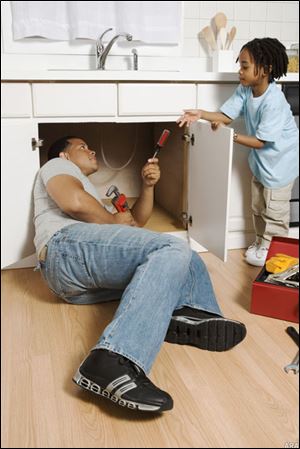
How Water Damage Caused By Your Cleaning Appliances Could Clean Out Your Wallet
12/19/2011
Water damage is one of the most common problems that homeowners need to watch for.
(ARA) - Water damage is one of the most common problems that homeowners need to watch for. It's equally important to look for potential sources of water damage inside your home as it is to check for outdoor problems.
If you catch water damage early, you can save yourself a lot of stress and money, but letting it slide can cost you: Safeco Insurance estimates that the average cost of repairing water damage is around $5,000, a significant figure for any homeowner. However, if you take action to prevent water damage in the first place, you'll give yourself extra peace of mind for the future.
Signs of water damage can be subtle: a ripple in your wallpaper, a hint of a yellow stain. If you see signs like these, it's best to start investigating them as soon as possible. But where should you be watching for water damage in your home? Use this checklist to protect your home. Once you've gone through it, you'll be able to relax, knowing that your home is water tight.
The Kitchen
While kitchens are typically a place of warm memories surrounding the dinner table, many of its components have the potential to cause costly water damage to your home. Using your appliances is essential and if something goes wrong, it is nice to have the peace of mind that you'll be protected. You can protect yourself by investing in a dishwasher that has built-in leak-protection technology.
In addition to your appliances, you should check for and repair any sink leaks and pull out your refrigerator to make sure no water is collecting behind it.
The Utility Room
Check your washing machine's hoses for bulging, cracking and leaks, and keep in mind that they should be changed every three to five years as part of regular maintenance. Also be sure to check your water heater for wet spots on the floor or rust on the tank. If your home has a sump pump, test it periodically to make sure it's functioning properly.
The Bathroom
Sealants are a key method of protection in this water-friendly room, but if they aren't in good condition, problems can arise. If the caulk around your shower or bathtub is cracking or coming apart from the wall, remove and replace it. You should also check under your sink and around the toilet for any loosened fittings or existing leaks.
Once you've checked the inside of your home for potential causes of water damage, you should also go outside and check your home's exterior. Give the roof, walls and gutters a detailed inspection for any cracks or damage that could let water in.
By carefully checking your home for signs of water damage, you can save yourself the time, money and stress that come with having to make major repairs. And when you're confident that your property is protected against costly damage, you can sit back and enjoy the comfort of your home.